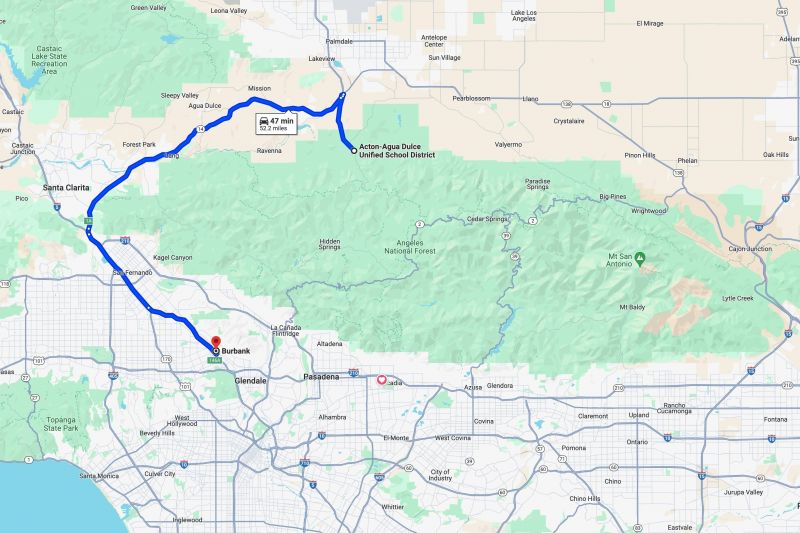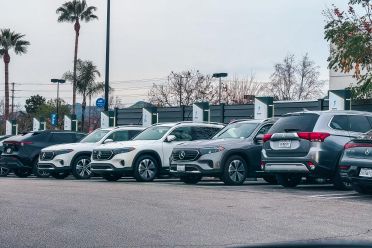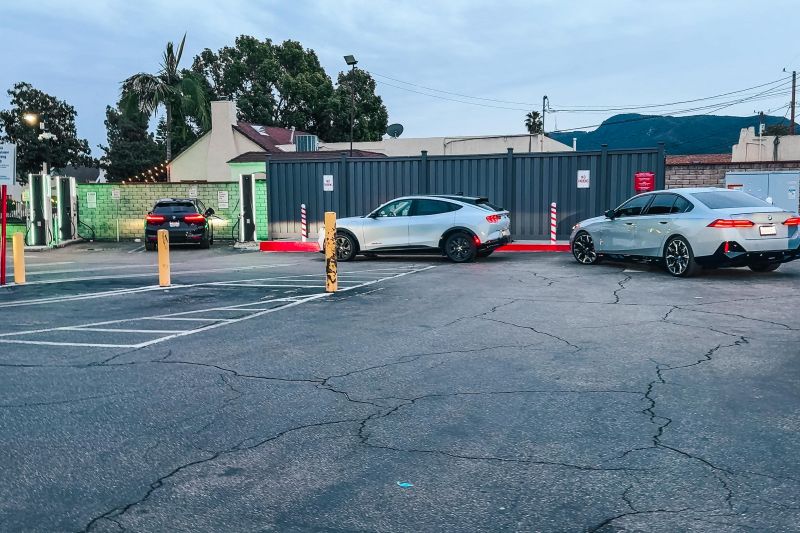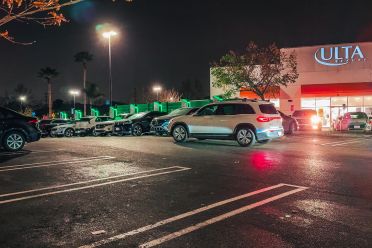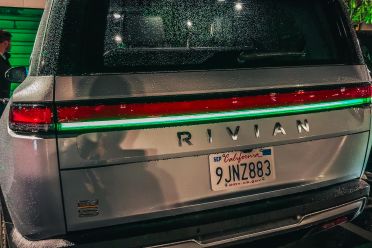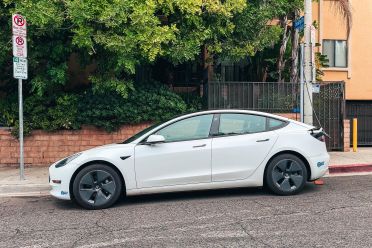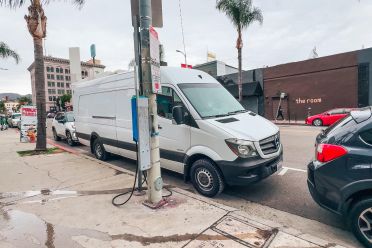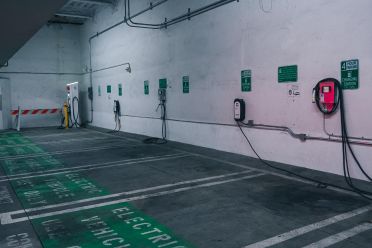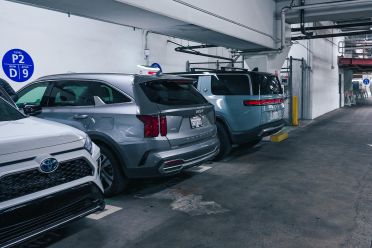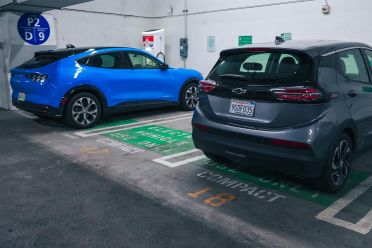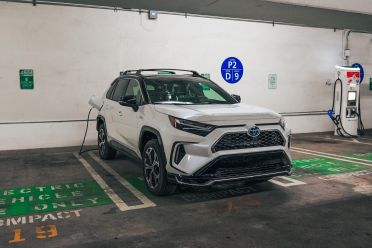A little while ago we did a Melbourne to Sydney road trip in both a petrol vehicle and an electric vehicle (EV), and then later we drove from Sydney to Brisbane in EV.
What we found along our travels were multiple faulty public EV chargers, while those that weren’t out of order would see their charging speeds considerably reduced when more than one car was using them at the same time.
So, while we were in the US during the recent Lexus GX launch, we wanted to rent an EV and see what public charging was like in one of the most developed EV nations.
We also wanted to skew the test in the EV’s favour by picking Los Angeles, which is located in California, a state with strict emissions laws, a high uptake of EV ownership and an aggressive charger rollout.
Our thought here was to get a better understanding of what Australia’s public charging future looks like if we follow in the footsteps of a progressive state like California.
EV uptake in the US
In California (to the end of 2022) there are just under 30 million registered light-duty vehicles. This covers sedans and SUVs, but doesn’t include bigger pickups including some electric dual-cab utilities.
Of the circa-30 million registered vehicles, around 1.1 million are ZEVs – battery-electric vehicles, plug-in hybrid electric vehicles (PHEVs) and hydrogen fuel cell electric vehicles (FCEVs – and a further 1.4 million are petrol hybrids.
US EV charger distribution
In Los Angeles County alone, there are around 6.3 million light-duty vehicles, of which around 282,000 are ZEVs.
In addition to the registered vehicles, Los Angeles County has 2286 DC fast chargers, with wider California offering just over 43,000 public chargers (a mix of DC and AC).
It’s unclear whether these figures include Tesla chargers, which until recently have been restricted to just Tesla vehicles.
The plan for our 50-mile drive
We rented a Rivian R1S from Los Angeles and hit the road for Acton, which is inland from Los Angeles.
That destination is where we filmed our review content of the R1S and the idea was that once we were done filming, we’d make the circa-50-mile trek back to Los Angeles to test a DC fast charger, a street AC charger (there are around 500 ‘Flo’ branded AC chargers dotted throughout Los Angeles County to help people without off-street parking to charge) and finally an AC charger in a public charging lot.
The idea was to see how well each of these situations worked in one fell swoop.
Our first stop was a bank of DC chargers at a Walmart in Burbank. These were Electrify America 350kW chargers and the supermarket car park had a bank of 10 in one group and another two in a separate group.
For reference, Electrify America is the public charging company Volkswagen America was forced to build as part of its circa US$2b penalty for the dieselgate scandal.
Our first DC fast charge
We arrived at around 5PM and found that all ten chargers were in use by EVs and a further 10 vehicles were in the queue snaking around the car park waiting to charge.
I didn’t realise there was a queue until I arrived from the opposite direction of the waiting cars and saw two cars leaving and tried to pull in – only to have the driver of a Mercedes-Benz EQS blow his lid at me for skipping the queue.
When we realised there was indeed a giant queue (at this point our vehicle had around 10 per cent of battery left and needed to be returned the following morning at 8AM fully charged) we started trying to find an alternative DC fast charger.
The Rivian’s infotainment system and the Electrify America app were a bit hit and miss in terms of showing availability. While this Walmart site initially showed charging spaces, it later stopped showing how many spaces there were and whether they were available.
So the next site we drove to – around a 10-minute drive away behind a bank – didn’t show availability, but we thought we’d give it a try anyway.
By this point it was around 5:30PM and when we arrived there was another queue of three cars and two of the four chargers were faulty.
One showed a pending software update, but appeared frozen, while the other was frozen at 20 per cent through somebody’s charge cycle, but with no vehicle attached to it.
At this point, we realised there wasn’t much point hanging around. We originally left our accommodation that morning at 7AM to film and were both tired and hungry, so we decided to head back to our Airbnb and agreed to go out later that night once it quietened down a bit.
We got back to the Airbnb and plugged the Rivian up to a wall socket. Comically, it showed a charging time of over 150 hours and by this point was down to 7 per cent battery range.
Part of the reason it’s so slow is because the US uses 120V electricity, compared to 240V here in Australia.
The simple power equation of Power = Volts multiplied by Amps means that if you half the voltage, you halve the power. While the circuit was running at a slightly higher amperage, it still wasn’t enough to make wall charging meaningful.
Trying to DC fast charge again…
A couple of hours later we tried to head out again. Los Angeles had record-breaking rain forecast so we wanted to try get charging out of the way as quickly as we could. We headed back to the Walmart again assuming there would no longer be a queue (the Electrify America charger availability had stopped working by this point).
We arrived at about 8:30PM to discover a queue was still there. This time it was around seven cars deep, so we joined the back of it.
We waited around an hour before we reached the front of the queue. It was quite clear that all the waiting drivers were visibly annoyed at having to sit around so long. It was also pretty evident that these people probably didn’t have off-street parking and charging at home – nobody would willingly sit through such a long wait each time they needed to charge.
There was also an interesting mix of vehicles. There was everything from a Toyota bZ4X to high-end EVs like Mercedes-Benz EQSs, Audi e-trons and Porsche Taycans.
So our moment to shine finally came just before 9:45PM. We plugged in, tapped our credit card and the charger immediately failed. We were forced to unplug and restart the charging session, with it finally connecting and commencing its charge process.
Despite the charger being rated for 350kW and the Rivian being capable of charging at over 200kW, the charger peaked at around 45kW. This was despite the battery being down to around 4 per cent and the battery also being pre-heated while waiting in queue.
We then spent an hour wandering around the Walmart until it closed just before 11PM. Still starving and with rain now properly falling, we tried to walk over to a few of the fast-food outlets near the Walmart to find they all shut at 10PM and the only way you could order food was, ironically, using a drive-through.
At this point we decided to give up and head home. There were now about 10 people in the queue again and none of them looked overly happy about being there. We unplugged with the battery sitting at around 50 per cent.
The charging session that ran for over an hour had an average charge speed of around 60kW, less than a third of its proper charging capability. This was most likely due to the chargers not being able to deliver peak power outputs when they were all in use.
Back at the Airbnb we plugged in for a charge from 12:30AM to 6:30AM. We wanted to leave as early as we could to try and charge the car at another fast charger before returning it. Murphy’s Law had us stuck on the 405 stationary with a road closure due to an accident.
We returned the Rivian with about 50 per cent of battery left (the overnight charge only added a couple of per cent of charge) and we copped the bill for returning it half full.
Using AC street chargers
From here we hopped into our other vehicle: a Toyota RAV4 Prime (review on this coming soon), a plug-in hybrid version of the best-selling mid-sized SUV.
We immediately hit the road to see what the street-based Flo chargers were like. We assumed that our DC charging disaster was perhaps just limited to an unlucky run the night before.
Flo street chargers are designed to offer an alternative charging solution to people that don’t have off-street parking to charge their vehicles. The app was also easy to use and showed charger availability so you wouldn’t waste time finding a charger only to find it not working.
The first charger we drove to near Hollywood showed that it was available, but there was a Tesla clearly plugged into it. Upon closer inspection it looked like the cable was only half plugged in. This was either accidental, or a deliberate ploy to take advantage of the better parking restrictions on offer for charging vehicles, while not having to pay for charging.
We moved on from here to the next one. It had a giant van parked in the way of the charger. And it wasn’t an electric van.
Okay, we thought we’d try two more chargers before giving up. The next charger we went to had a Kia EV6 parked in the bay, but the charger was smashed off the street light it was mounted on and sitting on the ground. Even though it was displayed as functional and available in the app, it appeared to be neither.
The final charger we found – much to our absolute shock – was not only available, but also working. One out of four isn’t too bad. Although it did smell like urine – best to handle that one with gloves!
Charging in a parking structure
The final piece to our electric vehicle charging discovery journey was to find a parking structure with EV charging to see if that experience was any better.
We were stunned to see about 10 charging bays all completely empty (granted it was around 9AM by the time we arrived). They were a mix of AC and DC chargers. Given our RAV4 Prime only accepts AC charging, we plugged up and went to get a coffee.
By the time we got back at around 10AM almost all of the charging bays were full.
The verdict
So, what did we learn with all of this? If this situation is in our future for Australia, we are well and truly screwed. The uptake of EVs in the US has been big, and they accounted for around 25 per cent of the market last year in California.
Australia is well below that, but with just as many public charging issues.
It appears in the US, just like Australia, that the Tesla charging network is less affected by charging during off-peak periods. That’s likely to change in the coming years as Tesla opens its charging network up to owners of other brands of vehicles.



